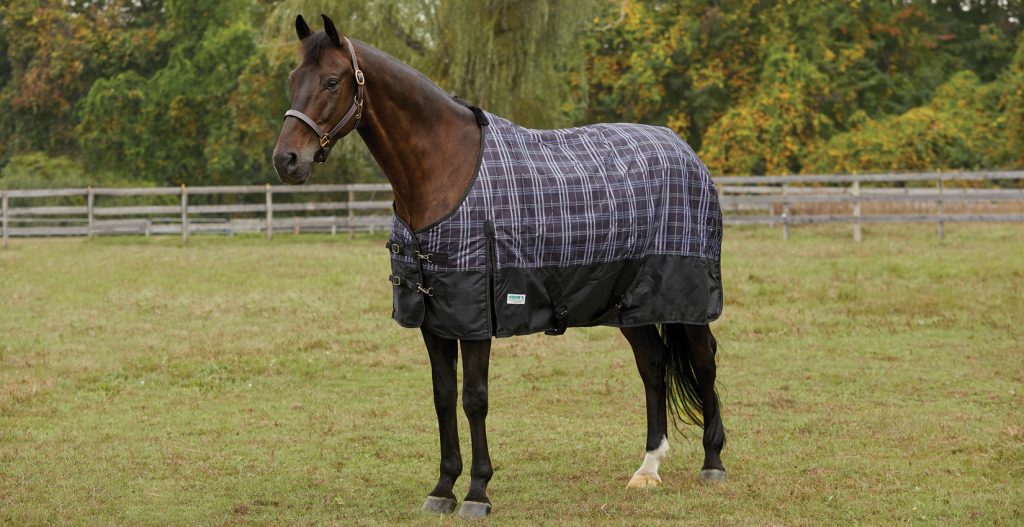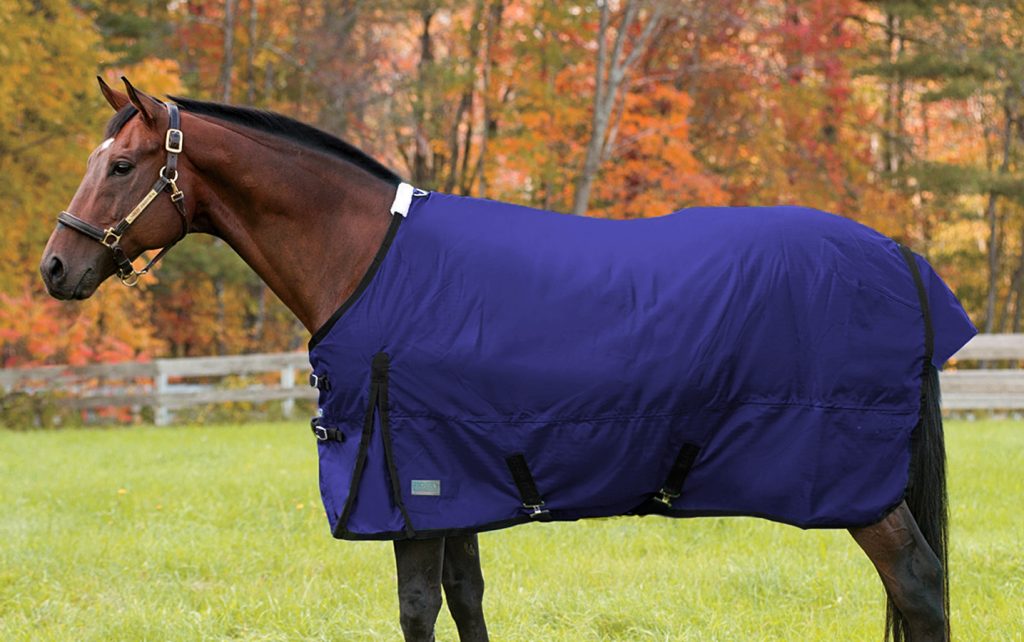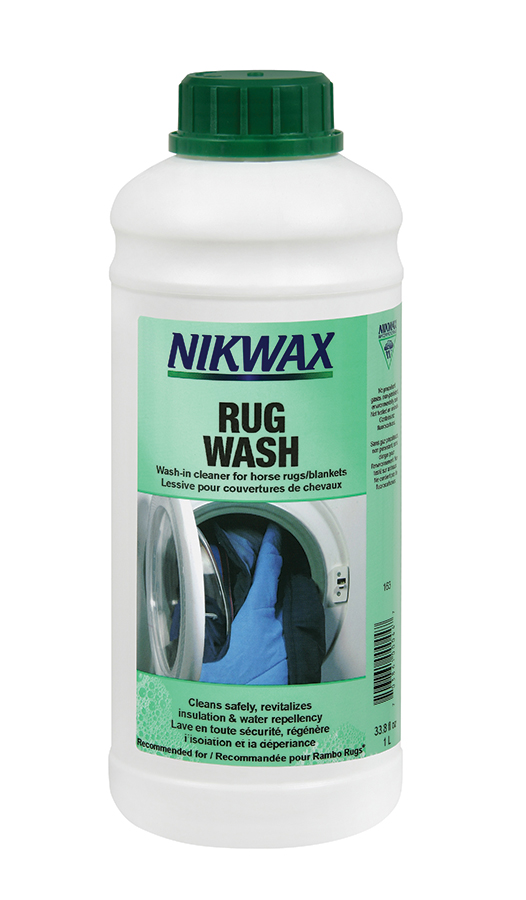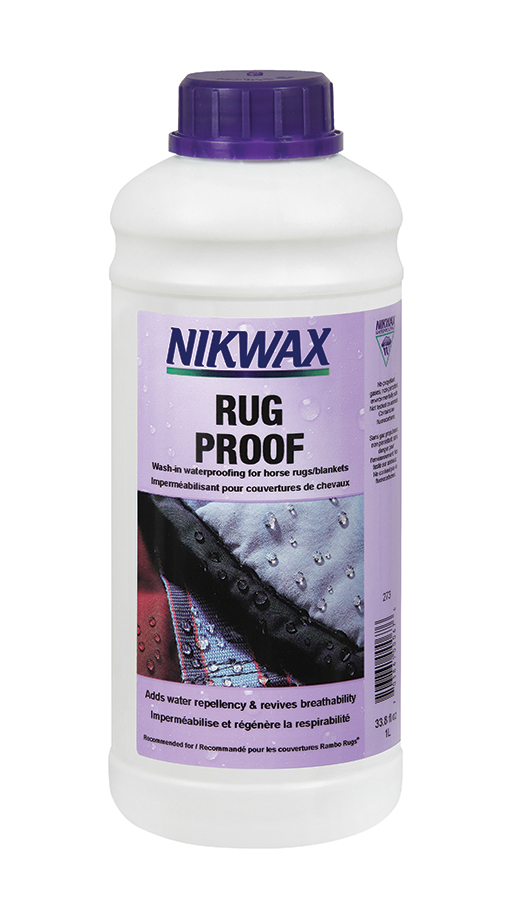
It’s October, a perfect time to consider the state of your horse’s turnout sheets and blankets to be sure your horse gets maximum protection against rain, mud, sleet, snow and wind—especially if body clipped. Turnout blankets and sheets represent an investment in your horse’s health and comfort—and a financial investment. Here’s how to get the most from your horse’s turnouts.
Fitting Is Foremost
More than any other factor you might consider in a waterproof turnout, proper fitting is top priority. An ill-fitting or incorrectly fastened blanket promises problems, from hair rubs to leaks to entanglement. Even when you’re reusing a turnout your horse has worn, check the fit this season. Horses’ bodies change with conditioning, workload, illness and retirement, and the size or cut of a turnout may need to change accordingly.
A turnout should overlap on your horse’s chest. Adjustable chest closures should fasten near the middle. With the front closed, the back seam should sit in a logical spot on your horse’s hind end, not halfway down the dock or pulled onto the rump.
You should be able to slide one hand snugly but comfortably under the blanket, around the neckline and over the withers with your horse’s head in grazing position and raised. If the opening is too large, your horse could get a foot caught, and it may rub your horse’s shoulders. If the opening is too small, the blanket will pull on or rub the withers, mane or points of the shoulders or tug at the base of the neck.
Adjust belly surcingles or belly band so you can slide a flat hand between the strap and the horse’s belly. Looser straps can allow a leg to get tangled while your horse lies down or rolls; overtightened straps can make the blanket rub and restrict.
A tail strap should be adjusted to create about a hand’s width between the strap and the rump. Leg straps, one passing through the other in a crisscross and each clipped to their opposite side, should also be adjusted to about a hand’s width between each strap and the inside of the leg. If the straps are too long and hang to the hocks, a leg can entangle. If the straps are too short, they may inhibit movement and chafe the tender insides of the gaskin or groin area.
When all fastenings are secure, consider the overall look of the blanket. It should not sag, and it should not appear stretched over the withers or hips. The hem should hang above your horse’s knees, not at or below them.
The designs and cut of blankets vary within and between manufacturers. If you find you have an ill-fitting blanket, consider not only trying a different size from the same range, but a different model and a different manufacturer as well. For tips on measuring your horse for a blanket, see our article.
Preserve Waterproofing
Fabrics become waterproof in various ways, but all waterproofing has one thing in common: a life expectancy. Currently, the highest quality blankets are expected to remain waterproof under normal conditions and use for three years. You can prolong waterproofing of turnouts with these easy tips:
- Sweep or brush away dirt, mud and caked manure promptly from the outer surface to allow waterproofing to do its job. These stuck-on compounds absorb and hold water and hasten degrading of the waterproofing. Spread the turnout flat on the ground and sweep it with a broom or brush it while your horse is not wearing it.
- Spot clean dirty areas with cool water and a brush. Save laundering turnout blankets and sheets for end-of-season unless the turnout is foul inside and out. Over-washing will degrade waterproof performance.
- To prevent mildewing and saturation of fabrics, hang wet turnout to drip and dry naturally before folding.
- For the recommended once-yearly washing, follow manufacturer’s care instructions carefully if you plan to do the cleaning yourself. Use only recommended cleaning methods and approved cleaners. Never use fabric softeners, as these ruin breathability and waterproofing. Professional horse clothing laundering services make end-of-season blanket care easy, and most are equipped to make blanket repairs.
- When the waterproof layer finally fails, you can replace it yourself or have a professional service do so. The most important aspect for waterproofing a turnout is to use a product that will maintain the turnout shell’s breathability.
Off-season storage methods are your last step in preserving your investment. Clean blankets should be kept in a pest-free environment and out of direct sunlight.
Have tips to share for top turnout care? Share your thoughts and photos with us on Instagram and Facebook by tagging @doversaddlery!



